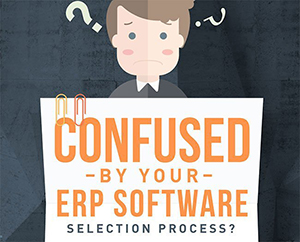Endless improvement is possible with cost centre accounting in SAP Business One
 We explain why tracking costs accurately can help your business improve and how SAP Business One supports cost centre accounting.
We explain why tracking costs accurately can help your business improve and how SAP Business One supports cost centre accounting.
Doing more with less in business isn’t always straightforward. You need to grow your revenue even as you reduce waste and excess expenditure.
However, not all costs are created equal. For instance, paying your employees well can increase satisfaction and productivity, which saves you money in the long-run. A customer service hotline costs you in terms of staff and telephone bills: but it could be a key factor in winning new business or keeping customers.
Deciding where to spend money to make money is a dilemma: resolving it requires accurate insight and control. Understanding and analysing expenses is faster and more accurate with cost centre accounting capabilities made possible by SAP Business One.
Accurate cost centre accounting enables improvement
A key facet of everyday business management involves assigning authority and responsibility for different costs, budgets, revenue targets and investment decisions. You need accountability in order to:
- Identify where and how money is being spent/made
- Understand the relationship between costs and profits
- Evaluate the types of expenses being incurred
- Generate ideas to reduce costs and maximise resources
- Forecast, plan and refine budgets.
A cost centre is a way of defining areas that cost your business money to operate without directly contributing to profits. So for example, manufacturers cost centres might include:
- Production areas or divisions
- Service departments within each plant/facility
- Research and development department
- Functions like marketing and human resources
- A specific assembly line or large project
Each business determines its relevant cost centres depending on how they want to track and allocate costs, and the benefits of understanding costs at a particular level of detail. More often than not, cost centres are based on departments within an organisational structure.
Cost centre accounting is the process of classifying and analysing costs so that different departments and their managers can see the costs they are responsible for, track and compare budgets versus actuals, allocate resources more effectively, and assess performance. In Australia, national businesses will often use cost centers to analyse profitability by state. A single ABN structure (one company) is sub-divided into state cost centers for reporting. By doing this, each state manager can receive their own profit and loss for their region.
Four SAP Business One features that enhance cost centre accounting
Managerial accounting and being able to allocate expenses to the right cost centre and generate reports is vital to improving internal efforts to increase efficiency and spend wisely.
Companies that want to excel in this area are well-advised to implement SAP Business One.
SAP Business One is a sought after enterprise solution for small to medium businesses with strong financial management functionality at its core. More effectively managing and automating finance and accounting processes is made simple, even for complex, multi-entity businesses.
For cost centre accounting, SAP Business One offers the following features:
Flexible accounts, cost centre allocation and budgeting
SAP Business One allows for flexibility in how you organise your general ledger and chart of accounts so you easily see different costs and revenues, group accounts to easily summarise balances, segment data and apply multiple dimensions.
Dimensions within SAP Business One are a versatile way to apply cost allocation rules depending on factors like function, geography, product lines, and multiple other criteria. Once set-up, cost centres can be allocated to transactions at the time of posting.
Automated distribution rules that are customised for your business and reporting requirements take the hassle out of cost centre accounting, and provides an up-to-date picture of expenses across your business.
The system can also be configured so you can upload budgets at the cost centre level and GL level.
Simplified and streamlined reporting
Cost centre accounting requires being able to both track expenses and issue reports that highlight the performance of different areas of the business. Finance teams may need to issue a large number of customised reports on an ongoing basis to ensure all managers are abreast of their financial position.
Because SAP Business One centralises and aggregates data with precision—including automating accounting postings in real-time—it also streamlines financial reporting and reduces the burden on your team.
Cost centre manager dashboards
Using SAP’s analytics tools, managers of cost centres can access tailored dashboards that can include information to support cost management. For example, data could be drawn in to showcase:
- Actual budget consumed as a percentage of the total budget.
- Budget consumption for specific cost types: e.g., travel.
- Anticipated costs not yet allocated, e.g., from purchase orders in the system.
Visual and intuitive dashboards make information more apparent, helping managers to identify issues and take action in a more timely way.
Capability to record expenses
Manual processes like expense reimbursement claims are a significant time-waster for employees, especially if poor systems make it complicated or impeded approvals. SAP offers integrated expense management and accounts payable automation solutions from SAP Concur to help further streamline financial transactions and reporting. These expenses can be coded directly to a cost centre to further automate cost centre allocations and reporting.
Would you like help to improve financial management in your business including cost centre accounting? Talk to an expert SAP Business One consultant now.








Leave A Comment